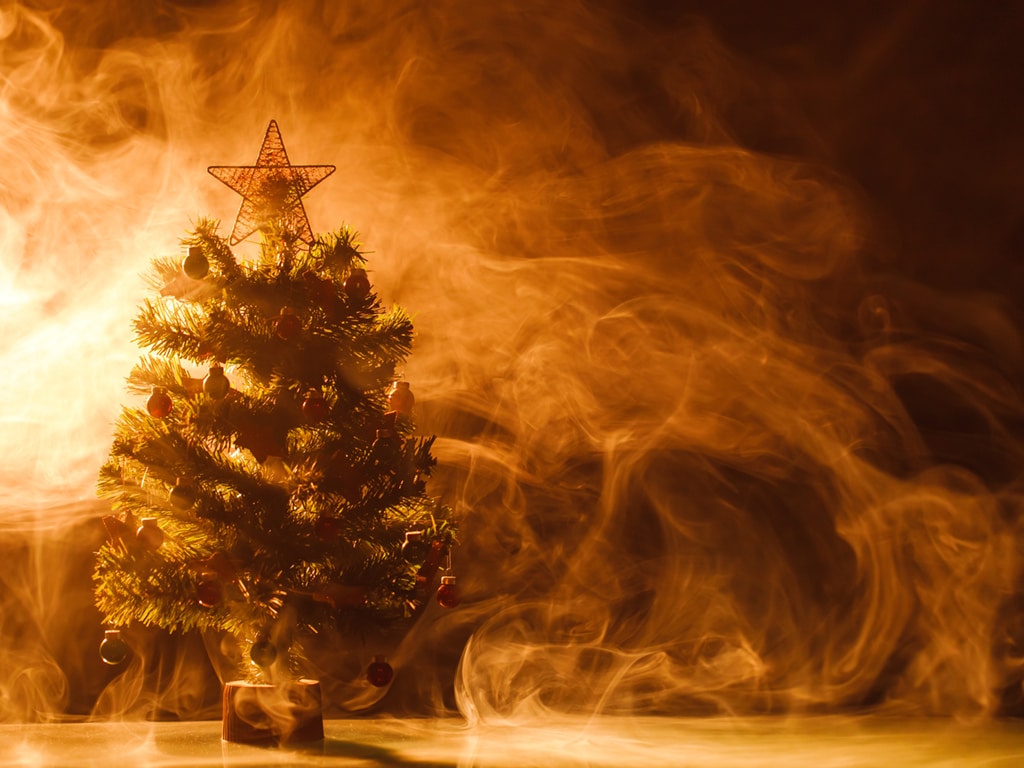
Protecting your home from Christmas tree-related fires requires careful attention to setup, maintenance, and safety precautions. Here are some key tips to ensure a safe holiday season.
How to Help Prevent Home Christmas Tree Fires
For all the joy and beauty Christmas trees bring, it’s important to remember that they are large combustible items that present potential fire hazards in the home. This blog provides an overview of home Christmas tree fires and tips from NFPA® to help you stay safer this holiday season.
FACTS
Almost one third of home Christmas tree fires are caused by electrical problems.
Although Christmas tree fires are not common, when they do occur, they are more likely to be serious.
A heat source too close to the tree causes more than one in every five of the fires.

1. Choose the Right Tree
- Fresh is best: Pick a tree with green, flexible needles that don’t easily fall off when touched.
- Avoid dryness: Shake the tree before purchase to check for excessive needle drop, a sign of dryness.
2. Set Up Your Tree Safely
- Distance from heat sources: Place the tree at least three feet away from fireplaces, radiators, candles, and heat vents.
- Secure placement: Ensure the tree is mounted securely in a sturdy stand to prevent tipping.
- Don’t block exits: Keep the tree away from doors or windows needed for escape in an emergency.
3. Water Your Tree
- Daily hydration: Keep the stand filled with water to prevent the tree from drying out.
- Check the stand size: Use a stand that can hold enough water for your tree’s size, typically one quart per inch of trunk diameter.
4. Be Mindful of Lighting
- Inspect lights: Check for damaged wires, frayed cords, or broken bulbs before use.
- LED lights: Use energy-efficient LED lights, which emit less heat than traditional bulbs.
- Avoid overloading outlets: Plug only as many strands as the manufacturer recommends into a single outlet or power strip.
- Turn lights off: Always unplug lights before leaving the house or going to bed.
5. Use Flame-Resistant Decorations
- Safe ornaments: Opt for non-flammable or flame-retardant decorations, especially near lights.
- Avoid combustible materials: Steer clear of paper, cotton, or flammable fabric ornaments.
6. Monitor the Tree Daily
- Watch for dryness: If needles are brittle, falling off in large amounts, or branches snap easily, it’s time to remove the tree.
- Smell test: A tree that’s drying out may lose its fresh pine scent.
7. Dispose of the Tree Promptly
- Don’t delay removal: Get rid of the tree as soon as the holiday season ends or it starts drying out.
- Proper disposal: Never burn the tree in a fireplace or wood stove—it can cause a dangerous flare-up. Instead, take it to a recycling center or follow your local disposal guidelines.
8. Have Safety Equipment Ready
- Smoke alarms: Test all smoke alarms before setting up the tree to ensure they’re working.
- Fire extinguisher: Keep a working fire extinguisher nearby and know how to use it.
- Escape plan: Make sure all family members know the escape routes in case of a fire.
By following these tips, you can enjoy a festive, beautiful Christmas tree without compromising safety. A well-cared-for tree is not only safer but also keeps your home looking merry and bright throughout the season!


